Site Response using Maxwell Damping
Note
To view this project in FLAC3D, use the menu command . Choose “Dynamic/ SiteResponseWithMaxwellDamping” and select “siteResponseMaxwell.prj” to load. The main data files used are shown at the end of this example. The remaining data files can be found in the project.
An illustrative model with a non-uniform soil profile under plane-strain conditions is performed for total stress site-response analysis. The 2-D soil profile and material groups are plotted in Figure 1. The soil profile base is at elevation -250 ft which is called the Alameda formation. From the base to the ground the soil layers are OBM, San Antonio, sand, stiff clay and YBM respectively. A fill layer with thickness of approximately 15 ft is at the ground surface at the right side. The lateral length of the soil profile is 800 ft. While the Alameda formation is modeled as elastic, all other materials are modeled with a Mohr-Coulomb model. The material properties are listed in Table 1. The natural frequency of the soil profile is approximately 0.56 Hz.
Material |
\(\gamma\) |
Shear |
Bulk |
Friction |
Cohesion |
pcf |
psf |
psf |
degree |
psf |
|
Fill |
110 |
4.80e5 |
4.64e6 |
0 |
800 |
YBM |
100 |
3.28e5 |
3.17e6 |
0 |
300 |
Stiff Clay |
110 |
4.80e5 |
4.64e6 |
0 |
800 |
Sand |
120 |
1.03e6 |
1.77e7 |
35 |
0 |
San Antonio |
120 |
1.83e6 |
2.23e7 |
0 |
3000 |
OBM |
120 |
2.39e6 |
2.31e7 |
0 |
4000 |
Alameda |
125 |
6.77e6 |
1.13e7 |
Dynamic free-filed boundaries are applied at the lateral sides of the mesh. To simulate a compliant base at the bottom of the model, a dynamic quiet boundary is applied at the base and the upward propagating motion (1/2 of rock outcrop motion) is input at the base (Figure 2). Maxwell damping is used with a target damping ratio of 5% in the range of 0.5 to 25 Hz (as in Figure 2); Rayleigh damping is with a target damping ratio of 5% at 0.56 Hz and 2.82 Hz. Note that the dominant frequency of the input motion (based on the Coyote record) is also between 0.56 and 2.82 Hz.
The calculated displacement histories at specified locations (A, B, C, D and E, see Figure 1) are presented in Figure 3. The non-level ground and non-uniform soil profile lead to different horizontal displacements at the selected ground locations. Figure 4 shows that sliding is mainly along the interface between the YBM and Stiff Clay layers and the sloped interface between the Fill and YBM layers. The displacement history patterns (Shown in Figure 3) with Maxwell damping. The results of Maxwell and Rayleigh damping (not shown here) are similar and the displacement magnitudes with Rayleigh damping were observed to be larger this is because the damping ratio with the Rayleigh damping scheme is smaller than the target value of 5% for frequencies between 0.56 and 0.82 Hz while for the Maxwell scheme, damping is approximately a constant value of 5% for frequencies between 0.5 and 25 Hz. The critical time step required for numerical stability for the Rayleigh damping analysis in this model is approximately 1/12 of that required for Maxwell damping, or in other words, the required calculation time with Maxwell damping is approximately only 1/12 that of Rayleigh damping.
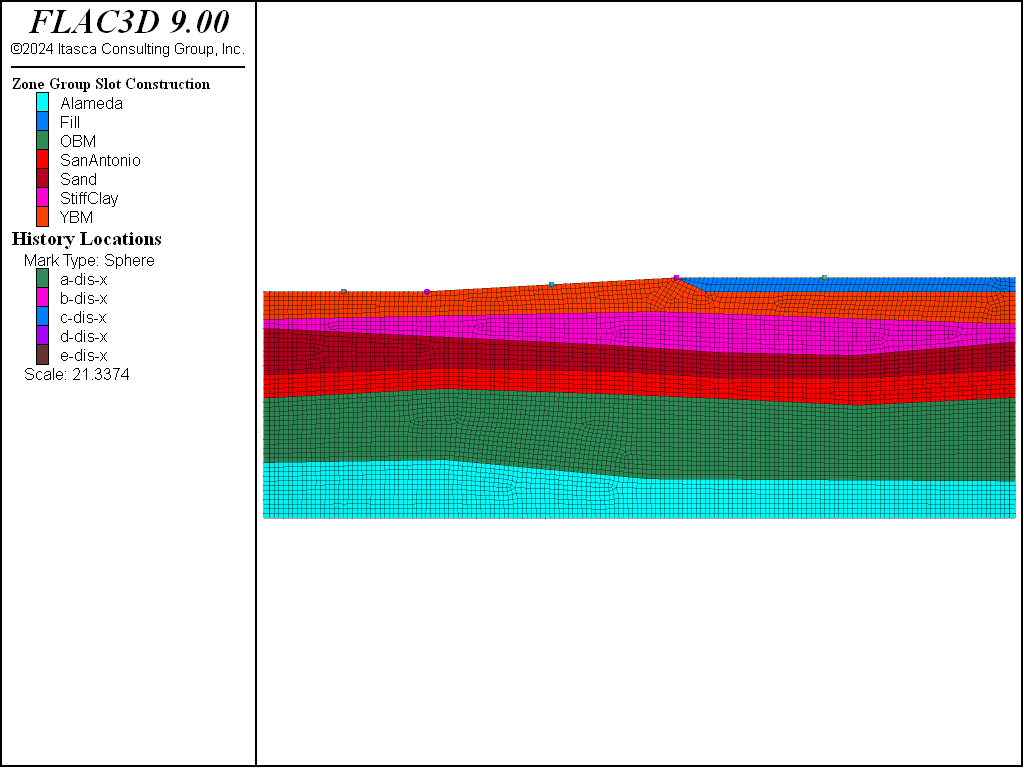
Figure 1: Soil profile, material groups and output history locations.
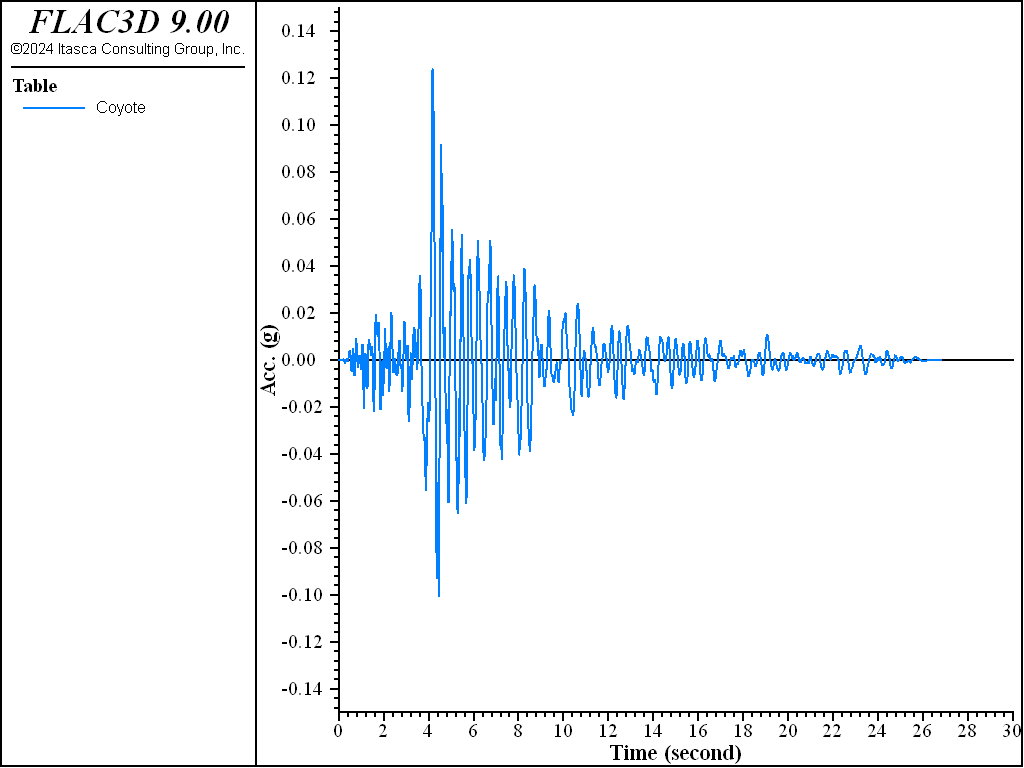
Figure 2: Input rock-outcrop acceleration motion.

Figure 3: Calculated displacement histories at specified locations by Maxwell damping.
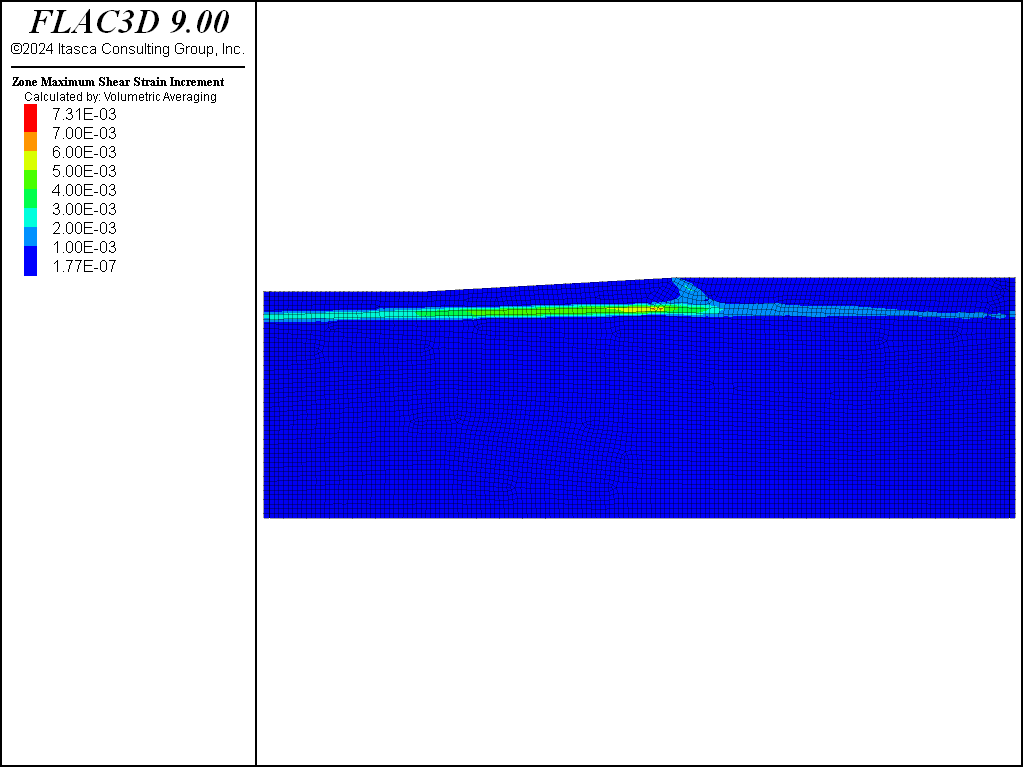
Figure 4: Calculated maximum shear strain increment by Maxwell damping.
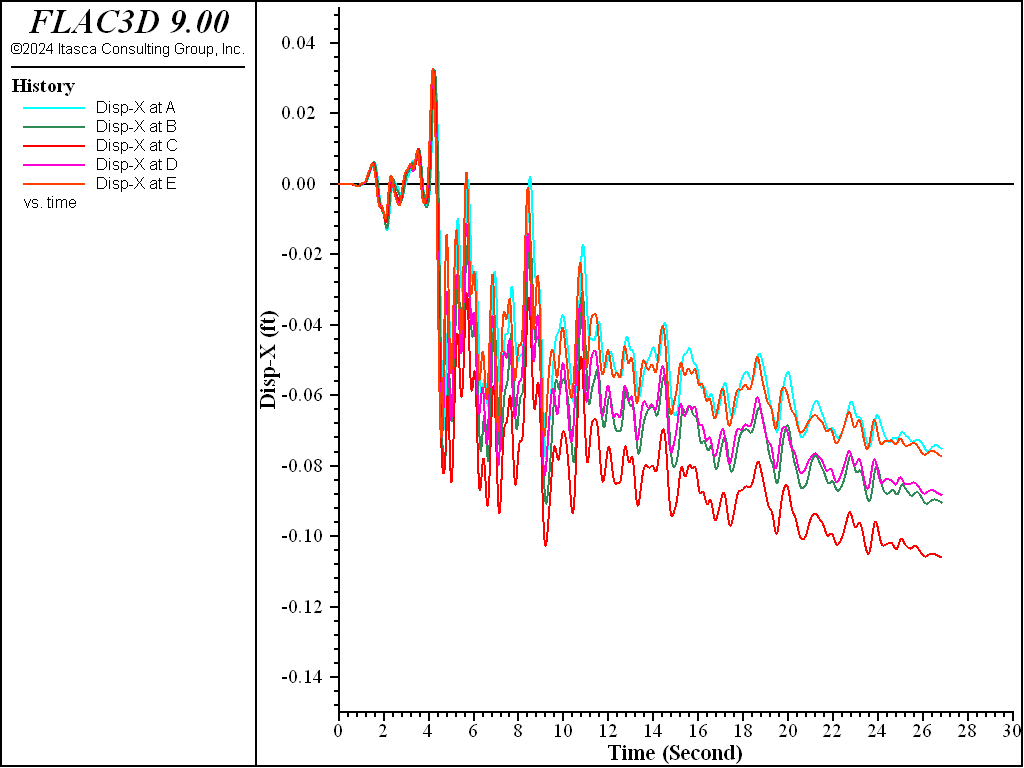
Figure 5: Calculated displacement histories at specified locations by Rayleigh damping.
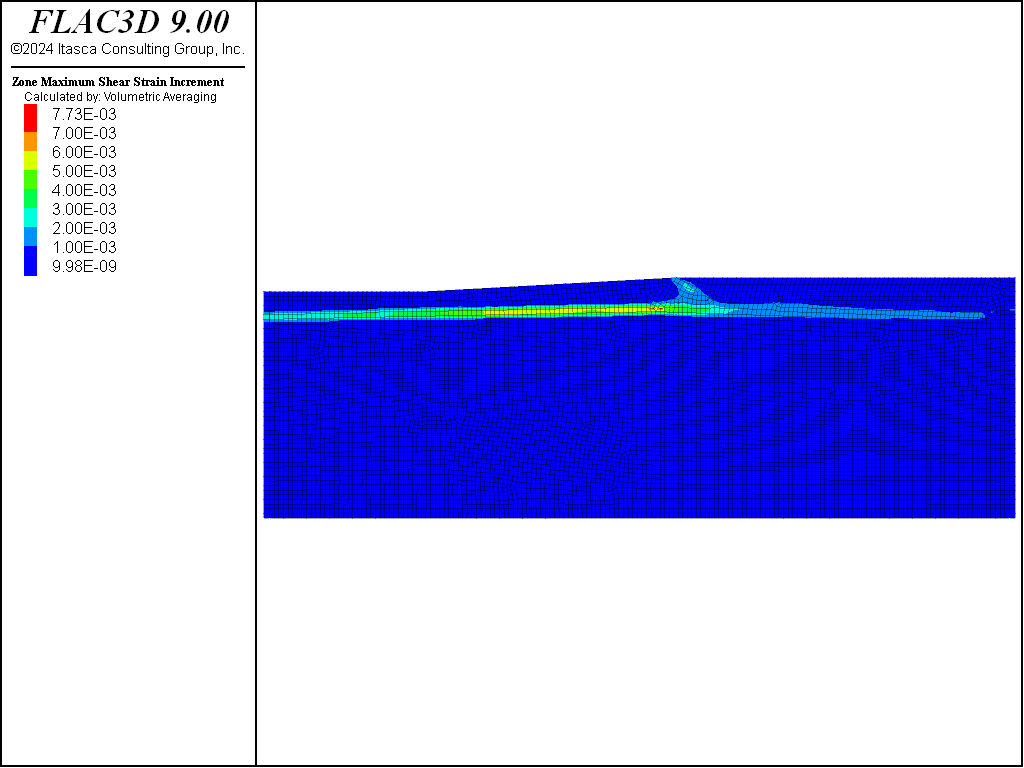
Figure 6: Calculated maximum shear strain increment by Rayleigh damping.
Data Files
siteResponseStatic.dat
model new
; Units: feet, pdf, second
model title 'Site Response Analysis'
model large-strain off
model configure dynamic
model dynamic active off
; geometry
[global zsize = 5]
program call "grid"
zone generate from-sketch
zone face skin
;
program call "parameters"
[parameters]
model gravity [g]
; BC
zone face apply velocity-y 0.0 range group "north" or "south"
zone face apply velocity-x 0.0 range group "west" or "east"
zone face apply velocity-z 0.0 range group "bottom"
; MC
zone cmodel assign mohr-coulomb
zone cmodel assign elastic range group "Alameda"
zone property density [den1] shear [G1] bulk [K1] range group "Alameda"
zone property density [den2] shear [G2] bulk [K2] cohesion [c2] ...
tension [c2] range group "OBM"
zone property density [den3] shear [G3] bulk [K3] cohesion [c3] ...
tension [c3] range group "SanAntonio"
zone property density [den4] shear [G4] bulk [K4] friction [f4] ...
range group "Sand"
zone property density [den5] shear [G5] bulk [K5] cohesion [c5] ...
tension [c5] range group "StiffClay"
zone property density [den6] shear [G6] bulk [K6] cohesion [c6] ...
tension [c6] range group "YBM"
zone property density [den7] shear [G7] bulk [K7] cohesion [c7] ...
tension [c7] range group "Fill"
;
zone initialize-stresses ratio 0.7 range group "Sand" not
zone initialize-stresses ratio 0.5 range group "Sand"
;
model solve convergence 1
model save "static"
siteResponseMaxwell.dat
model restore "static"
;
zone gridpoint initialize displacement (0,0,0)
zone gridpoint initialize velocity (0,0,0)
zone initialize state 0
;
model dynamic active on
;
; Histories
history delete
model history name='time' dynamic time-total
zone history name='a-acc-x' acceleration-x position 600 0 10
zone history name='a-dis-x' displacement-x position 600 0 10
zone history name='b-acc-x' acceleration-x position 440 0 10
zone history name='b-dis-x' displacement-x position 440 0 10
zone history name='c-acc-x' acceleration-x position 305 0 2.5
zone history name='c-dis-x' displacement-x position 305 0 2.5
zone history name='d-acc-x' acceleration-x position 170 0 -5
zone history name='d-dis-x' displacement-x position 170 0 -5
zone history name='e-acc-x' acceleration-x position 80 0 -5
zone history name='e-dis-x' displacement-x position 80 0 -5
;
;;; Target 5% Maxwell Damping
zone dynamic damping maxwell 0.0385 0.5 0.0335 3.5 0.052 25.0
;
zone face apply-remove
zone face apply quiet range group 'Bottom'
table 'acc' import "Coyote.acc"
[table.as.list('vel') = table.integrate('acc')]
[global mf = -den1*Vs1*g] ; with g since acceleration is in g.
zone face apply stress-xz [mf] table 'vel' time dynamic range group 'Bottom'
zone face apply stress-xy 0.0 range group 'Bottom'
zone face apply stress-zz 0.0 range group 'Bottom'
zone dynamic free-field plane-x
zone gridpoint fix velocity-z range group 'Bottom'
zone dynamic multi-step on
;
history interval 40
model dynamic timestep fix 5.0e-4 ; so that output time interval is 2e-3
model solve time-total 26.83
model save "dynamic-maxwell"
siteResponseRayleigh.dat
model restore "static"
;
zone gridpoint initialize displacement (0,0,0)
zone gridpoint initialize velocity (0,0,0)
zone initialize state 0
;
model dynamic active on
;
; Histories
history delete
model history name='time' dynamic time-total
zone history name='a-acc-x' acceleration-x position 600 0 10
zone history name='a-dis-x' displacement-x position 600 0 10
zone history name='b-acc-x' acceleration-x position 440 0 10
zone history name='b-dis-x' displacement-x position 440 0 10
zone history name='c-acc-x' acceleration-x position 305 0 2.5
zone history name='c-dis-x' displacement-x position 305 0 2.5
zone history name='d-acc-x' acceleration-x position 170 0 -5
zone history name='d-dis-x' displacement-x position 170 0 -5
zone history name='e-acc-x' acceleration-x position 80 0 -5
zone history name='e-dis-x' displacement-x position 80 0 -5
;
;;; Taget 5% damping, Rayleigh @ f1=0.585, f2=5f1
zone dynamic damping rayleigh 0.037 1.26
;
zone face apply-remove
zone face apply quiet range group 'Bottom'
table 'acc' import "Coyote.acc"
[table.as.list('vel') = table.integrate('acc')]
[global mf = -den1*Vs1*g] ; with g since acceleration is in g.
zone face apply stress-xz [mf] table 'vel' time dynamic range group 'Bottom'
zone face apply stress-xy 0.0 range group 'Bottom'
zone face apply stress-zz 0.0 range group 'Bottom'
zone dynamic free-field plane-x
zone gridpoint fix velocity-z range group 'Bottom'
zone dynamic multi-step on
;
history interval 50
model dynamic timestep fix 4.0e-5 ; so that output time interval is 2e-3
model solve time-total 26.83
model save "dynamic-rayleigh"
⇐ Block Under Gravity — Examining Damping Options | One-Zone Sample Loaded in Shear with Strain Rate Reversal ⇒
| Was this helpful? ... | Itasca Software © 2024, Itasca | Updated: Apr 02, 2024 |
